John Constable Picture Study Aid and Art Prints
$8.99 – $198.00
Free standard shipping on orders for kindergarten curricula, Picture Study Aids and art prints, and Seasonal Art Devotions and prints that are over $100!
- Please note that there are no returns on digital products.
- If you need more art print sets or Picture Study Aid book and art print sets than what I have in stock, please fill out this form.
- See shop policies for current processing times, shipping, and return information.
John Constable Picture Study Aid
Included in this 29-page John Constable Picture Study Aid (download a sample Picture Study Aid here!) is the following:
There is also an option to order separate, professionally-printed copies of each piece for use during your picture study time in the drop-down menu below as well. These are printed on durable cardstock with a smooth finish and display beautifully. The prints do not include the Picture Study Aid PDF download – this is a separate purchase.
The pieces* discussed are:
*AmblesideOnline users, please note that these are not all the same pieces as those selected for the AmblesideOnline artist rotation.

…in the latter reigns of the Georges, and before John Ruskin had begun to teach, the public were not prepared to receive truth in simplicity. Art was insincere, elaborate, even bombastic—as also were theology, manners and many other things; landscapes were painted, not out of doors, but in studios, and were not likely therefore to be true to nature. The critics were enraged with Constable’s works and said, “What is to become of conventional landscape painting if such pictures as these are to be admired?” Constable had committed a monstrous offense, he had told the truth in an artificial age! Let us hope that during our lives we shall have the honour of committing some such magnificent offense with equally good result, in one department of life or another.
MRS. MAXWELL Y. MAXWELL (THE PARENTS’ REVIEW VOL. 15, NO. 03, 1904)
At the beginning of his career, landscape painting was considered a “lesser” form of art compared to history or genre paintings. Despite this, he continued to pursue this “lesser” art form, and he, along with J.M.W. Turner, revolutionized the 19th-century English opinion of landscape painting. He did care about what others thought of him and his work, and he suffered periodic depression through the many long years of waiting to be admitted to the Royal Academy as a full member. Through all of this, however, he continued to “offend,” as Mrs. Maxwell puts it above, and clung to his love of landscape painting.
I also found this wonderful quote about him in John Constable: The Making of a Master by Mark Evans:
Two of the most intriguing of his surviving sketchbooks, one used from July to October 1813, the other during the same months of 1814, reveal a transformation taking place in Constable’s working method. He spent these months in East Bergholt, walking in the fields and lanes of Suffolk and Essex, and each summer he filled a tiny book with pencil drawings. The 1813 sketchbook records how Constable examined the countryside in minute detail, ‘picking up’, as he put it, ‘little scraps of trees, plants, ferns, distances &c. &c.’
What a wonderful inspiration to go out and start “picking up little scraps” for ourselves!
I read in several places that he is often dismissed because his paintings are a bit oversaturated in society – on pillows, mugs, greeting cards, sofa art prints, etc. And admittedly, I didn’t pay him much attention when studying his pieces in school as I prefer portrait and genre painting to landscapes. But after having read about his life, discovering that he was one of the first plein air artists (meaning he painted the majority of his pieces outside), and learning that his art was a kind of reaction to the industrial revolution in England gave me a greater appreciation for him and his work.
The intention of this picture study aid is to equip the home educator with some basic facts and understanding of a sampling of the work of John Constable. It is not meant to be an exhaustive analysis or study of each piece or a complete biography of the artist.
About picture study, Ms. Mason recommended keeping learning as simple as possible, especially in the younger years, and put extra emphasis on the images by themselves.
There is no talk about schools of painting, little about style; consideration of these matters comes in later life, the first and most important thing is to know the pictures themselves. As in a worthy book we leave the author to tell his own tale, so do we trust a picture to tell its tale through the medium the artist gave it. In the region of art as else-where we shut out the middleman. (vol 6 pg 216)
Definite teaching is out of the question; suitable ideas are easily given, and a thoughtful love of Art inspired by simple natural talk over the picture at which the child is looking. (PR Article “Picture Talks”)
…we begin now to understand that art is not to be approached by such an acadamised road. It is of the spirit, and in ways of the spirit must we make our attempt. We recognise that the power of appreciating art and of producing to some extent an interpretation of what one sees is as universal as intelligence, imagination, nay, speech, the power of producing words. But there must be knowledge and, in the first place, not the technical knowledge of how to produce, but some reverent knowledge of what has been produced; that is, children should learn pictures, line by line, group by group, by reading, not books, but pictures themselves. A friendly picture-dealer supplies us with half a dozen beautiful little reproductions of the work of some single artist, term by term. After a short story of the artist’s life and a few sympathetic words about his trees or his skies, his river-paths or his figures, the little pictures are studied one at a time; that is, children learn, not merely to see a picture but to look at it, taking in every detail.” (vol 6 pg 214)
This Picture Study Aid is meant to offer basic information about the artists as well as ready answers should your student ask about a particular aspect of a piece and the explanation isn’t readily evident. Ms. Mason emphasized not focusing on strict academic discourse when doing picture study, but rather simply exposing students to the art itself:
His education should furnish him with whole galleries of mental pictures, pictures by great artists old and new;––…––in fact, every child should leave school with at least a couple of hundred pictures by great masters hanging permanently in the halls of his imagination, to say nothing of great buildings, sculpture, beauty of form and colour in things he sees. Perhaps we might secure at least a hundred lovely landscapes too,––sunsets, cloudscapes, starlight nights. At any rate he should go forth well furnished because imagination has the property of magical expansion, the more it holds the more it will hold. (vol 6 pg 43)









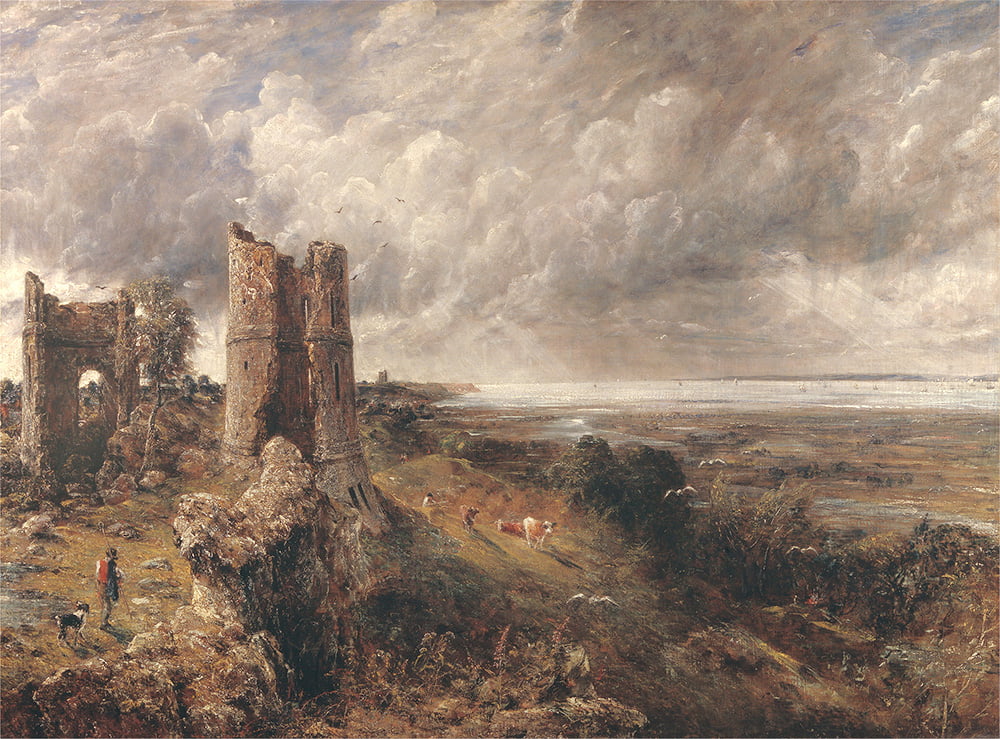
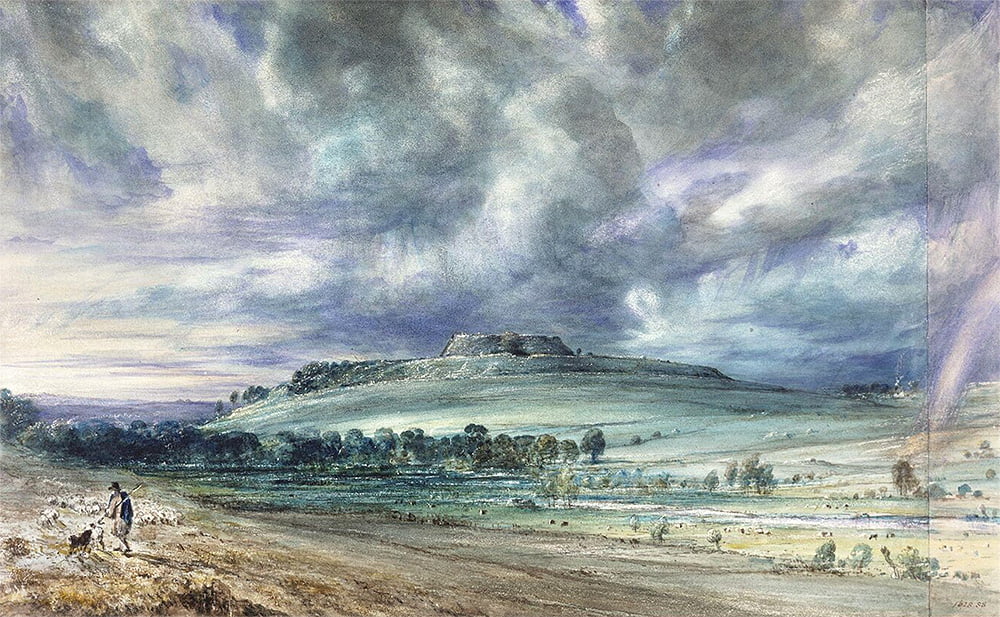
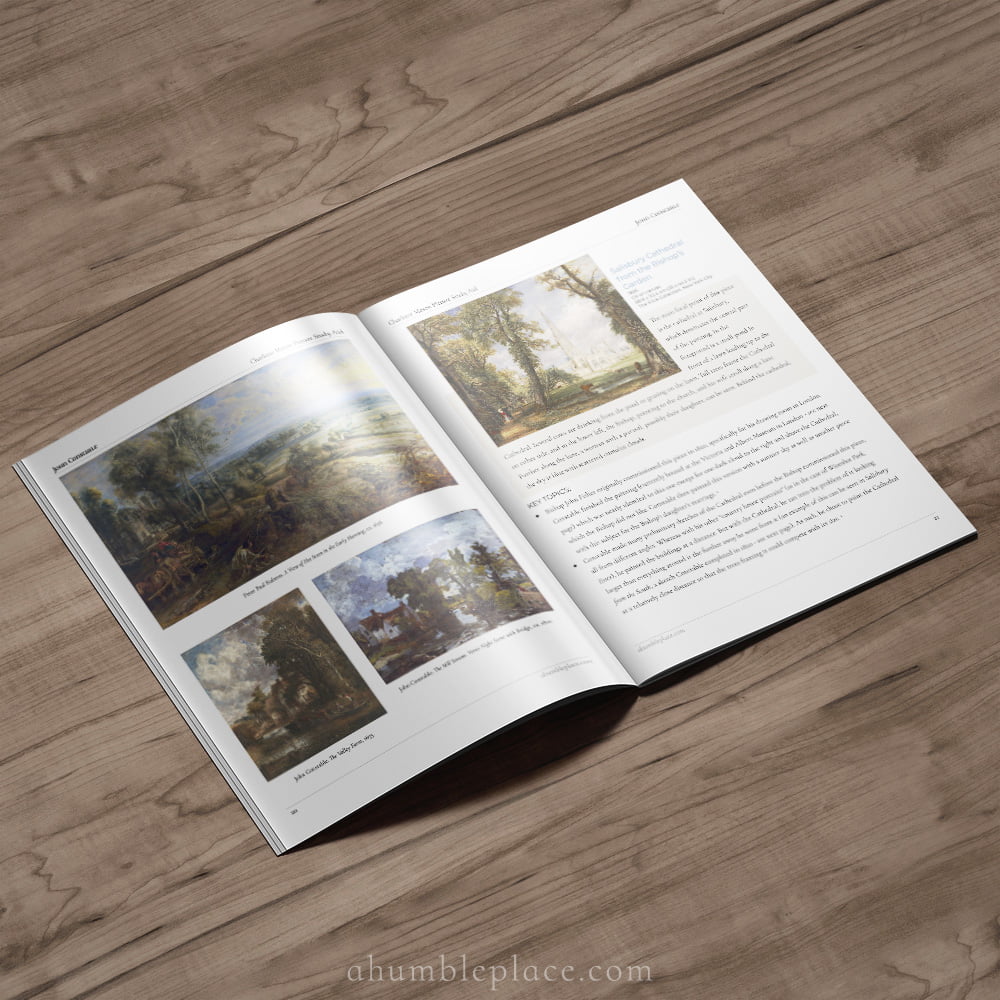

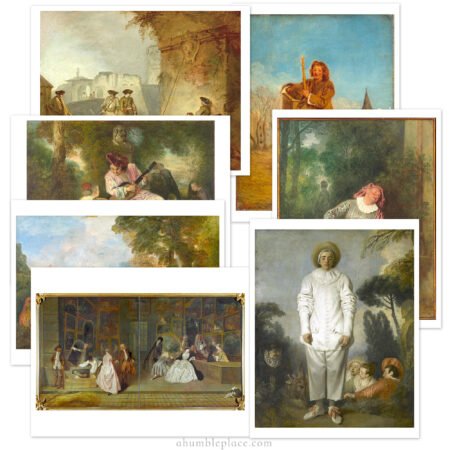


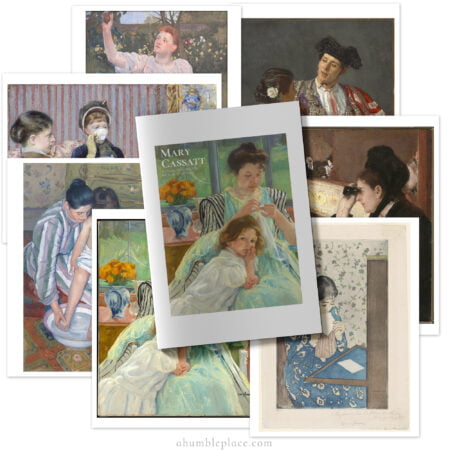



These high quality prints and study guide make Artist Study easy for us.
We are always pleased with our purchases and this is no exception.